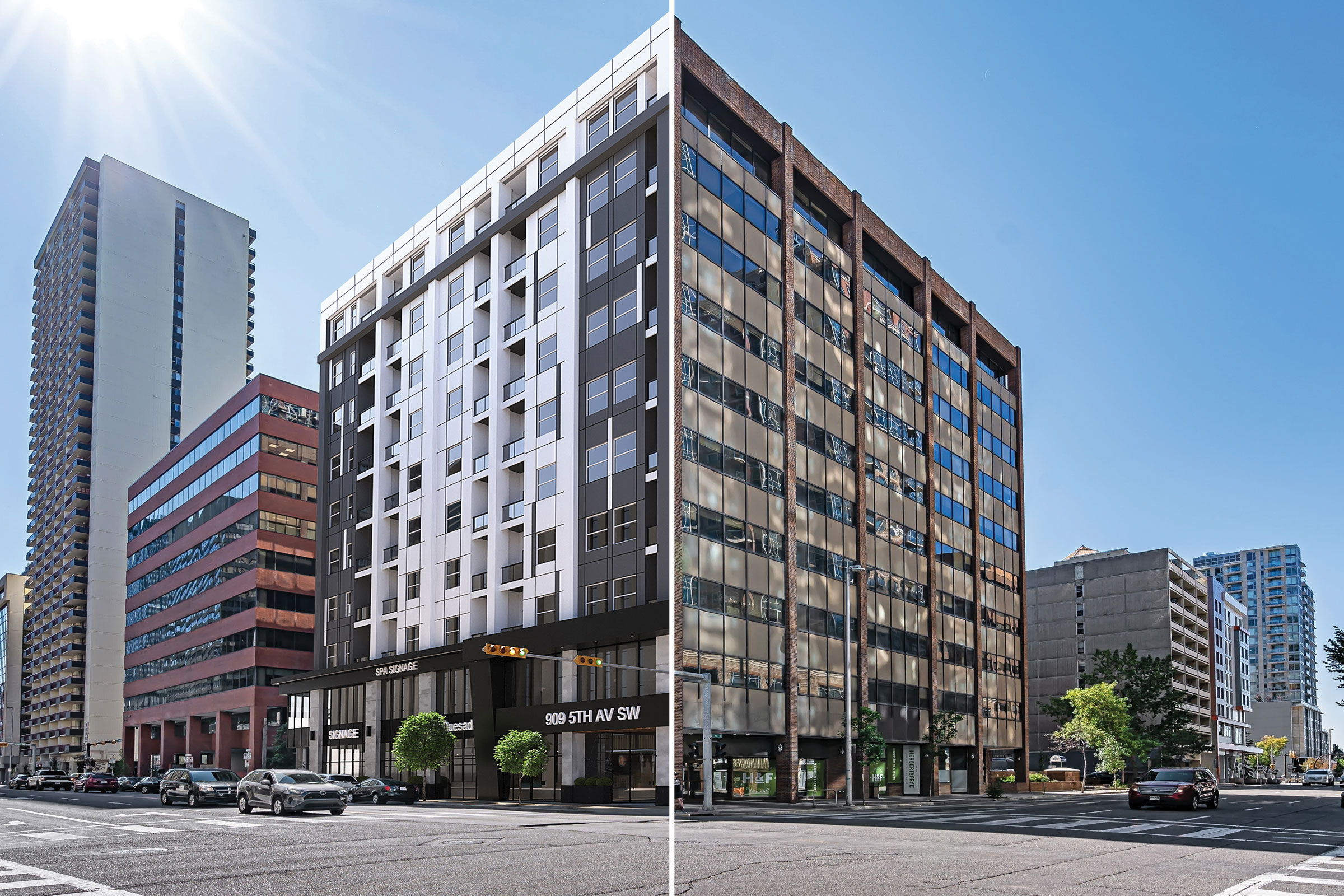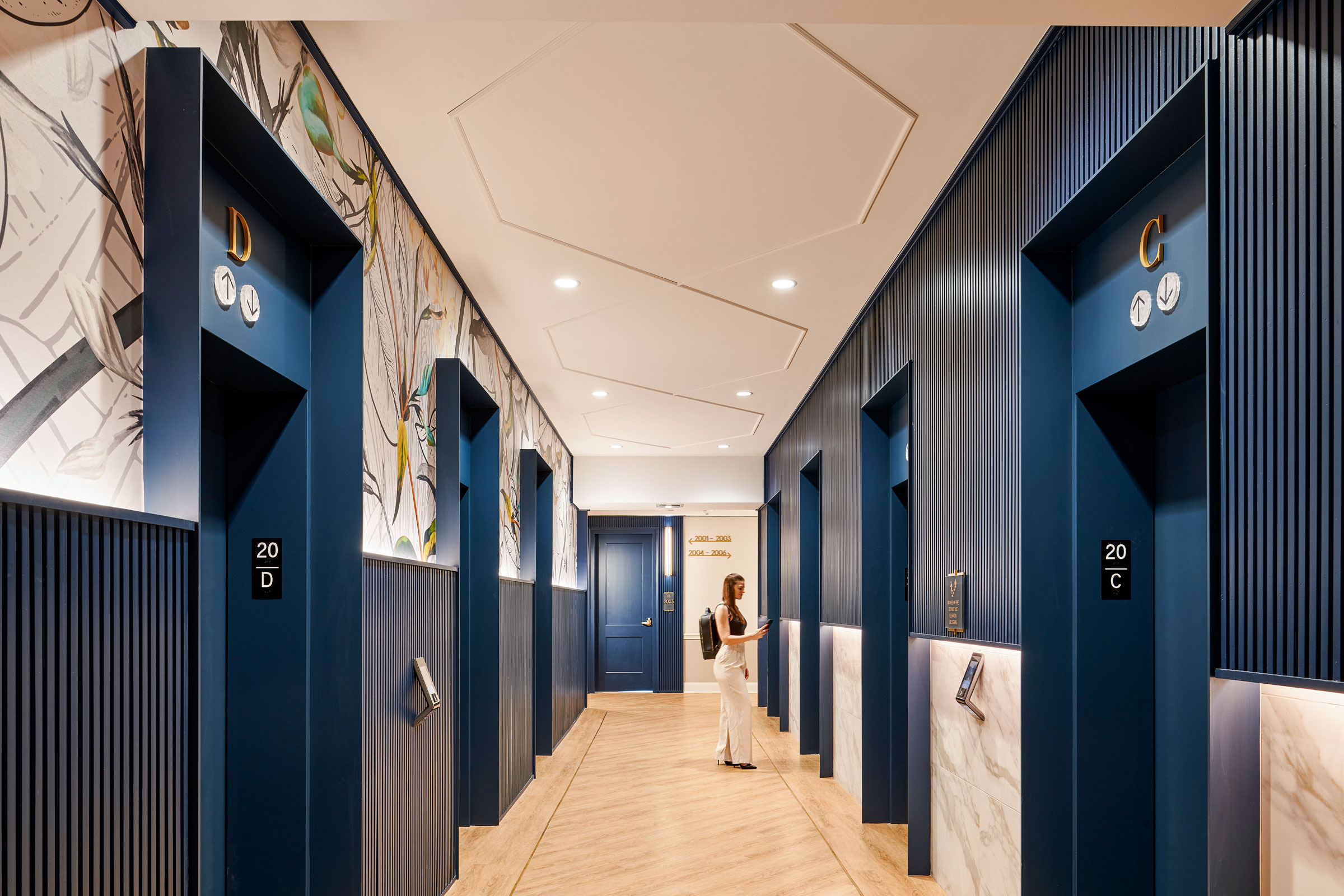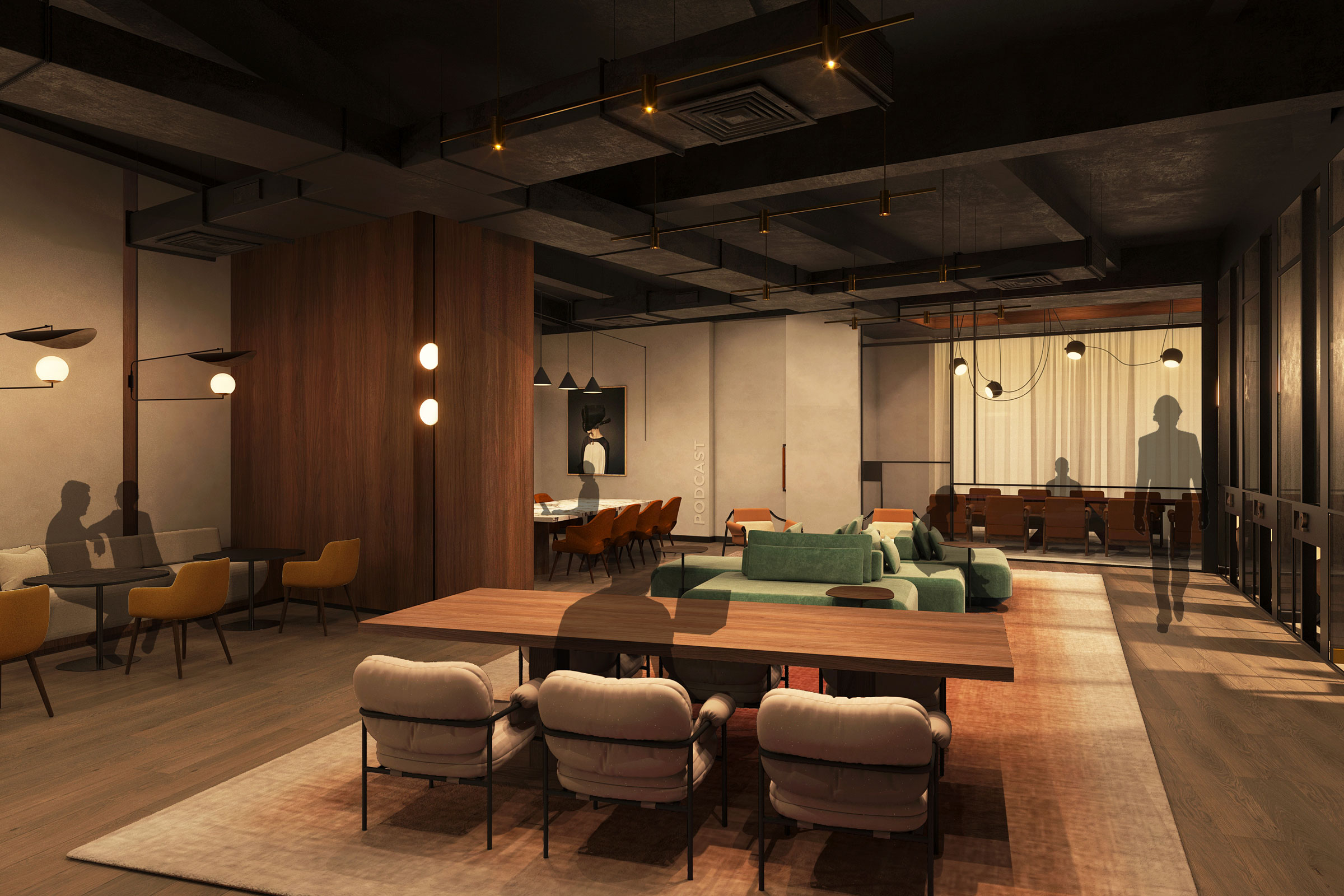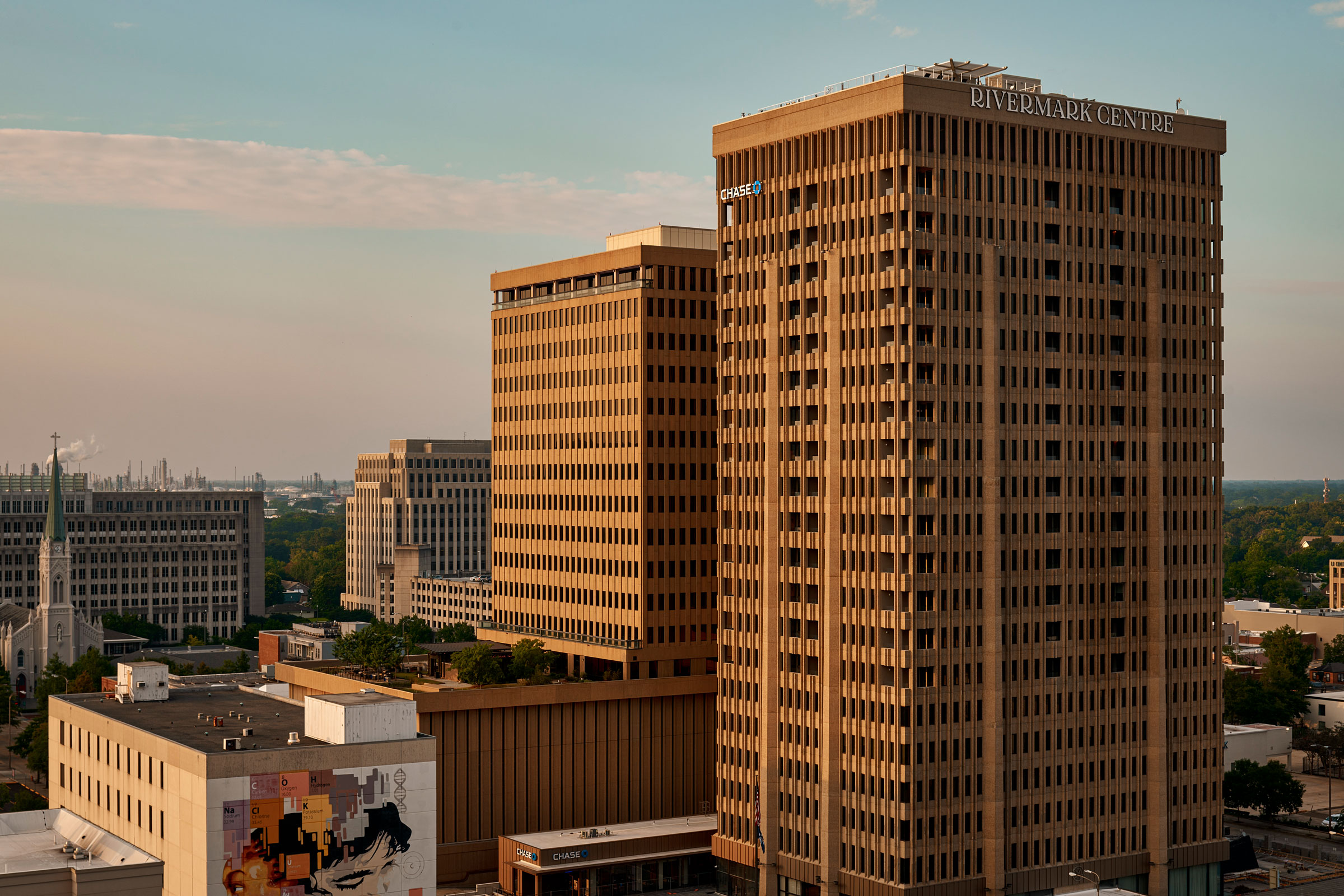Story at a glance:
- The housing crisis in the US and Canada is huge—a shortage of 7.5 million homes and 3.6 million homes, respectively.
- Urban conversion in real estate from vacant offices to residential units is proving to be a triple win—for people, developers, and municipalities—in some cases.
- Gensler has developed a 150-point algorithm to determine the economic feasibility of conversion in real estate projects.
Vacant urban buildings have been an ongoing and vexing problem in cities across the United States and Canada even pre-Covid. The pandemic only worsened the problem as working from home retains broad appeal. The economic downside has resulted in a glut of vacant commercial buildings and the closure of city eateries, coffee shops, food trucks, and bars that previously catered to the urban workforce.
Fortunately conversion in real estate, in many cases, is easing the economic hardships faced by municipalities and urban property owners. By renovating existing buildings to serve as residential dwellings, vibrant and safe city life is returning to many once desolate places in urban North America.
Let’s explore how the latest urban phenomenon called conversion in real estate happens with illustrative examples.
What is Conversion in Real Estate?

Before and after of the external of The Cornerstone, Calgary’s first project completed through the city’s downtown office conversion incentive program. Rendering courtesy of Astra
Conversion in real estate refers to transforming commercial properties for other uses. According to the CBRE Group, approximately two-thirds of all conversions in real estate involve remodeling an office building into multifamily residential apartments or condominiums or mixed-use residential. The renovation could also be for modifying commercial towers into mixed-use residential hotels, life sciences, universities, dormitories, schools, arts centers, or related purposes.
In the US approximately 120 office-conversions in real estate projects are expected to be completed in 2024, compared with an annual average of 45 between 2016 and 2023. In the past eight years, 133 office-to-multifamily conversions in real estate created over 22,000 apartments. Those currently underway or planned (169) may lead to 31,000 apartments over the next few years. Although it may seem significant, it barely makes a dent in the US housing shortage.
In other words, there remains huge potential in meeting the housing crisis through commercial conversions in real estate. Currently, an average of 1.4% of the nearly 20% of vacant urban buildings in major American cities are currently undergoing conversion in real estate to create downtown revivals. Most of these transformations are occurring or planned in Cleveland, Cincinnati, Chicago, and San Francisco.
Challenges of Successful Conversions in Real Estate

The success of conversion real estate projects may be impeded by things like zoning regulations, funding acquisition, absence of necessary utility infrastructure, and more. Photo by Ryan Gobuty
As reported in the Washington Post, the major difficulties in successful conversions in real estate include:
- Absence of plumbing and electrical infrastructure
- Ceilings aren’t high enough to fit the needed lights, pipes, cabling, and ducts
- Dearth of inner courtyards/Lack of windows
- Proximity to skyscrapers blocking natural light
- Lack of parking/access to public transit
- Elevator/exit stair accessibility
- Location of central building door
- Zoning laws preventing conversions
- High selling prices/difficulty getting financing
- Delays in permit acquisition
Gensler’s algorithm makes it easy to determine if an existing commercial tower can be easily—and profitably—converted to residential or other uses. Some of the critical elements, such as location and floor plate, are assessed in hours.
“The process allows you to find the ones that work and the ones that don’t, and then you spend your time on the ones that really do work,” says Steven Paynter, Gensler principal and global practice area leader, in an earlier gb&d article. According to Paynter, approximately 30% of commercial buildings are candidates for conversions.
Federal Incentive for Conversions in Real Estate

In recent years, various federal government bodies—including the Department of Housing and Urban Development as well as both the Department of Energy and Transportation—have begun incentivizing conversion projects. Photo by Ryan Gobuty
In late 2023 the Biden administration released a White House guidebook that details federal resources to incentivize commercial to residential conversions. A number of loans, grants, guarantees, and tax incentives are meant to entice developers to revitalize urban cores all over the country.
For example, the Department of Transportation (DOT) offers new low-cost financing opportunities to remodel office towers into affordable housing near public transit. Climate-focused financial resources from the Inflation Reduction Act not only make commercial to residential conversions more financially feasible. They also upgrade these buildings to be zero emissions.
That’s not all. Combined funding from the Department of Housing and Urban Development (HUD) and the Rehabilitation (Historic Preservation) Credits program along with state and local funding can significantly reduce costs associated with office building-to-home conversions.
“With the guidebook there are a lot of programs that HUD and other agencies offer that can be used to build new supply or to rehab or convert old supply. Sometimes not all of those potential uses are well known to developers. The goal of the guidebook is to spell out for developers and local governments to create a resource they can turn to explore these different funding sources. Not all sources will work for all projects. Not all might make sense for developers to pursue, but I’m willing to bet that just by virtue of them all being in one place and in a common format that details the program parameters, it’ll be useful for developers to learn more about these resources,” Aaron M. Shroyer, former senior advisor at the Office of Policy Development & Research at HUD, said in a previous article for gb&d.
Fortunately for developers, the Departments of Energy and Transportation are authorized to lend their current program rates for conversion in real estate projects. It amounts to a treasury bond rate plus a small markup. We’ve heard recently that it’s going to be a treasury bond rate plus 0.375%—a tiny amount extra. That puts the cost of borrowing somewhere around 4.9 to 5% in early 2024, depending on how long you borrow for. That is probably 60% less than the cost of borrowing for construction right now. That makes a huge difference,” Paynter says.
Cities Encouraging Conversion in Real Estate
A growing number of cities encourage developers to take on conversion in real estate projects in creative ways. Here are a few examples.
- Calgary, Alberta. Announced in 2021, the Downtown Calgary Incentive Program offers USD$153 million in grants (USD$55 per square foot) after approval and once they’re complete. The funds are already accounted for, but more is planned. The conversions will lower the over 30% 2023 vacancy rate.
- Washington, D.C. and Boston enacted 20- and 29-year tax abatements, respectively, for conversions in real estate projects.
- Chicago and New York City established designated offices to handle all necessary paperwork and streamline the process of conversion in real estate.
Examples of Conversion in Real Estate
There are several examples of conversions in real estate in the US and Canada. Here are a couple.
Rivermark Centre South, Baton Rouge, Louisiana

Gensler transformed an older office asset, the Rivermark Centre South tower in Baton Rouge, into luxury rental apartments. Photo by Ryan Gobuty
Located at 451 Florida Street in Baton Rouge, the Residences at Rivermark is a transformative office to mixed-used residential conversion offering access to the Red Stick Farmer’s Market, YMCA, and the Shaw Center for the Arts. The Gensler architectural firm preserved the original facade with the Louisiana State Historic Preservation organization. As a result, the project earned historic tax credits by maintaining the building facade and lobby through pioneering an adaptive reuse design strategy.
“As office users and residential tenants share the first-floor lobby of the building, it was important to allow for the coexistence of office and residential uses in the same elevator bank. This was done by incorporating a destination dispatch-type system, which was implemented without changing the physical elevator structures,” says Brooks Howell, Gensler’s principal and Global Residential Practice Area Leader, in an earlier article for gb&d.
Overlooking panoramic views of the Mississippi River, pools, hot tubs, fire pits, and grill areas are on the roof. Other communal tenant amenities include a clubhouse, onsite parking garage, fitness center, and pet amenities.
Renovating existing buildings instead of building new ones is always more sustainable. “Embodied carbon savings can be substantial. On average we have found that retaining an existing structure can prevent 349 kilograms of carbon dioxide equivalents from being released into the atmosphere per square meter. For a 14-story conversion like The Residences at Rivermark, this is the equivalent to 1.75 million kilograms of carbon dioxide—or flying across the world more than 100 times,” Howell explains in another gb&d article.
55 Broad Street, New York City

A coworking space as imagined inside the 55 Broad Street office to residential conversion project in New York City. Rendering courtesy of CetraRuddy Architects
Slated to be an all-electric, zero emission, carbon neutral building featuring a rooftop pool with move-ins starting in January 2025, this 420,000-square-foot 55 Broad Street office building is a dream conversion to residential. “The mechanical program we designated for the building allowed us to eliminate 95% of the building-wide mechanical systems. We gained a lot of square footage from those mechanical spaces. If you need to start cutting through the building or creating blind shafts or setbacks, those all cost a lot of money if you need to add a lot of square footage vertically. If you can do that without bracing, great,” David Marks, head of acquisitions for Silverstein Properties, the developer of the project, previously told gb&d.
“Replacing this with 571 apartments is expected to house over 1,100 residents in the building. “That’s 1,100 residents that most likely work in New York City, earn a decent income, and are going to spend it in the immediate vicinity. That’s a huge social aspect, and it brings safety. It brings life to the neighborhoods in the area,” Marks adds.



